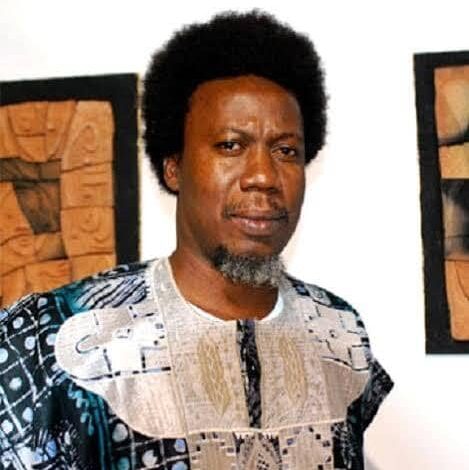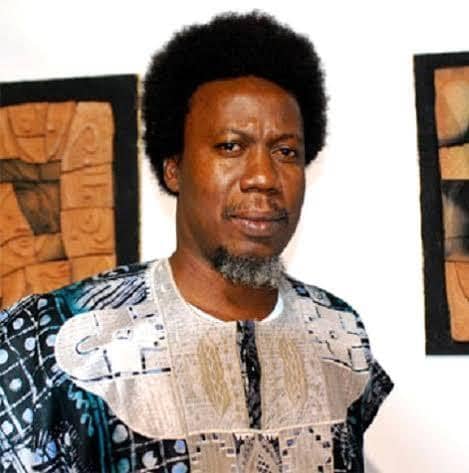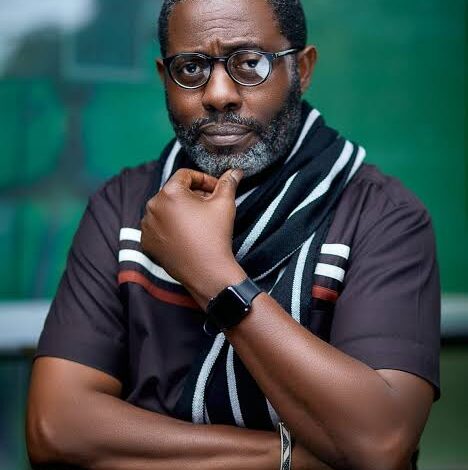‘Threads of Time’: Coffee table book on the works of Tola Wewe for launch August 17

‘Time by itself means nothing, no matter how fast it moves, unless we give it something to carry for us; something we value’ – Ama Ata Aidoo, as quoted in Threads of Time
By Editor
THIS quote captures the essence of Threads of Time by Chinaza Orji, a richly layered new coffee-table book that honours the life and work of Nigerian master artist, Chief Tola Wewe. it’s scheduled for launch on August 17, 2025 at Nike Art Gallery, Lekki, Lagos. Curated and authored by Orji, it is a visual autobiography that provides understanding on Chief Tola as a person, an artist, a politician, etc. Orji curates a well documented body of work exploring 137 works over the decades that validates Wewe significance in the art scene building credibility and value. This book also allows curators, collectors and scholars to trace Chief Wewe’s journey, styles and themes explored over time. Each work is situated within a timeline, mapping how the spiritual, political, and intellectual climate of Nigeria has informed Wewe’s evolving practice.
Chief Wewe was born in 1959 in Okitipupa, Ondo State. He is one of the defining figures of contemporary Nigerian art. He holds a Bachelor’s degree in Fine Art from the University of Ife (1983) and a Master’s in African Visual Arts from the University of Ibadan (1986). His career began as a cartoonist and educator, teaching at Adeyemi College of Education and working with Daily Times and Signature Art Gallery, before dedicating himself fully to his studio practice in the early 1990s.
As one of the founding member of the iconic Ona art movement, Wewe has long drawn from Yoruba iconography, folklore, and philosophical concepts. This unique blend of indigenous knowledge, personal vision, and contemporary technique has earned him the informal moniker “iwin”, the spirit. His nocturnal creative habits and almost trance-like artistic output speak to this sacred, intuitive process.
Across his vast body of work, spanning thousands of pieces, Wewe explores a wide thematic terrain: from femininity and identity to politics, sexuality, spirituality, and generational memory. His pieces have been exhibited internationally, including in Europe, the United States, and across Nigeria, and his style is instantly recognisable for its vibrant colour, intricate patterning, and balanced dialogue between simplicity and complexity.
At the heart of this monumental project is Orji, she has masterfully combined strategic insights with her artist passions. Formerly the founder of Watersworth Art Gallery in Lagos, she has long championed the voices of African artists.she is A graduate of Sotheby’s institute of art, she launched Ebubay, an online gallery, curated shop, and full-service art consultancy now based in Houston, Texas. Her mission is bold yet simple: to amplify African art with care, intelligence, and intentionality.

Chief Tola Wewe
Ebubay is the publisher of Threads of Time, and this book stands as one of its most significant projects to date. The platform was born out of necessity to address real, structural challenges that African artists face: lack of global visibility, limited market access, and the under-valuation of their work. Threads of Time is a celebration of legacy, creativity, and identity. It is a collectors handbook and an excellent production to serve not only educational but aesthetic needs for your spaces.
While it explores Yoruba spirituality and traditional cosmology, Orji, a woman of Christian, faith clarifies that the work does not reflect her personal beliefs. Instead, it is an exercise in cultural integrity and a commitment to telling the story as it is, with respect and care.
In her curatorial introduction, she writes, “These works transcend tribe and time, drawing from a collective consciousness that honours the traditions while dreaming forward… Reflect, if you will, on the passage of time—not as something that merely happens to you, but as something you are intricately a part of.”
This launch is more than a cultural event. It is a tribute. A ceremony. A handover of memory from one generation to another. It reminds us that we are part of something older than ourselves and that our stories, when honoured and preserved, can outlive even time itself.
And as Orji states, “It is about who we are, what we have inherited, and what we choose to pass on. Art helps us remember that.”
For enquiries: ebubaytv@gmail.com & www.ebubay.com




